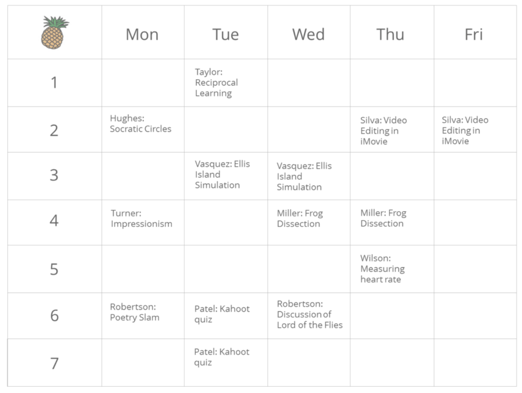If your school is gearing up to implement High-Quality Project-Based Learning (HQPBL), you must be ecstatic! The anticipation to see your students dive into inquiry is exciting, but a little nerve-wracking as well. With any new instructional design, you want to ensure your school is set up for success. The best way to do that is to establish a strong collaborative culture. Collaboration is key to HQPBL because, just like your students, teachers are learning something new. They will need opportunities to plan together and share ideas. Establishing a collaborative culture across your school does not have to be a daunting task. With a few straightforward strategies, you can ensure that you cultivate a climate of learning and growth among your staff.
One effective approach to promote a collaborative culture in your school is the use of Professional Learning Communities (PLC’s). PLC’s are an excellent way to establish collaboration amongst teachers and staff and provide job-embedded professional development. Implementing HQPBL requires continuous planning and processing. Utilizing PLC’s as a place where teachers can receive feedback, learn new information, and plan together will maximize collaboration. Furthermore, it offers a safe environment for educators to experiment and explore during their planning process. Two natural components of HQPBL are inquiry and discovery. So it makes sense for teachers to be inquisitive themselves with the process, and discover new approaches together. Allow teachers to ask questions and experiment with their planning. It will not only allow them to trust their own voices but also make them less reliant on following a scripted lesson. After all, the best way to implement HQPBL in your school is to do it yourself.
With any new process, it is important to have a vision. A vision establishes what your intended outcomes are and what kind of impact you want to make. For any collaborative team to be successful, they need to understand what their end goal is. This is why a vision should also be shared. Involving all teachers in shaping the vision ensures a sense of ownership and integrates the vision into the fabric of the school's operations. When everyone is on the same page on what your intended impact is, collaboration is inevitable. It also sets the stage for leadership to foster the vision through staff meetings, newsletters, and other initiatives. This, in turn, will create teacher buy-in and pave the way for successful implementation of HQPBL in your school.
Learning together is another essential component of collaboration. When teachers learn together, they share ideas and strategies to use in the classroom. PLC meetings can serve this purpose, however, they only offer “sit and get” professional learning. The best kinds of learning happen when you see it modeled, or you do it yourself. A pineapple chart can accomplish this exact purpose. A pineapple chart is a way to allow your teachers to observe each other without the stress of a formal review or feedback. It is truly a method designed for teachers by teachers. How it works is simple. Find a location that is a common place for teachers, i.e. the copy room or staff lounge. Make sure it’s a location not visited by administrators often. Use either a bulletin board or a white board to create a weekly schedule detailing all the designated time blocks in the day. See the figure below for an example.
 How Pineapple Charts Revolutionize Professional Development, Cult of Pedagogy
How Pineapple Charts Revolutionize Professional Development, Cult of Pedagogy
The purpose of this schedule is to facilitate teachers in sharing a stimulating lesson or activity they wish to showcase to their fellow educators. The pineapple, being a traditional symbol of hospitality, serves as a representation of this welcoming gesture. By signing up on the chart, teachers are extending an invitation to their colleagues to visit and experience their classroom. Again the intention of the pineapple chart is not to give feedback, hence why the schedule should truly be in a teacher-centered space. Rather, the pineapple chart is so teachers can experience an exciting lesson and learn something new together. It is the perfect supplement to a collaborative culture because it is teacher-driven and focused on student learning.
As you embark on the journey of HQPBL, don't forget to enjoy the process. You wanted your students to experience more from their learning and ignite their natural sense of inquiry. Undoubtedly, it will demand planning and effort, but by implementing the suggested strategies to foster collaboration, the process can become more manageable. These strategies will also promote strong instructional practices and capacity building. It is crucial for teachers to restore their faith in their own knowledge and expertise, as this is not only essential for their own achievement but also for the success of our students.
About the Author:
Mannu is an experienced educational professional with a demonstrated history in both instructional and leadership roles. She is a former intermediate teacher, interventionist, and instructional coach. Her areas of strength include project management, instructional coaching, educational technology, and school-wide instructional planning. Mannu is also an ASCD Emerging Leader, Class of 2019.